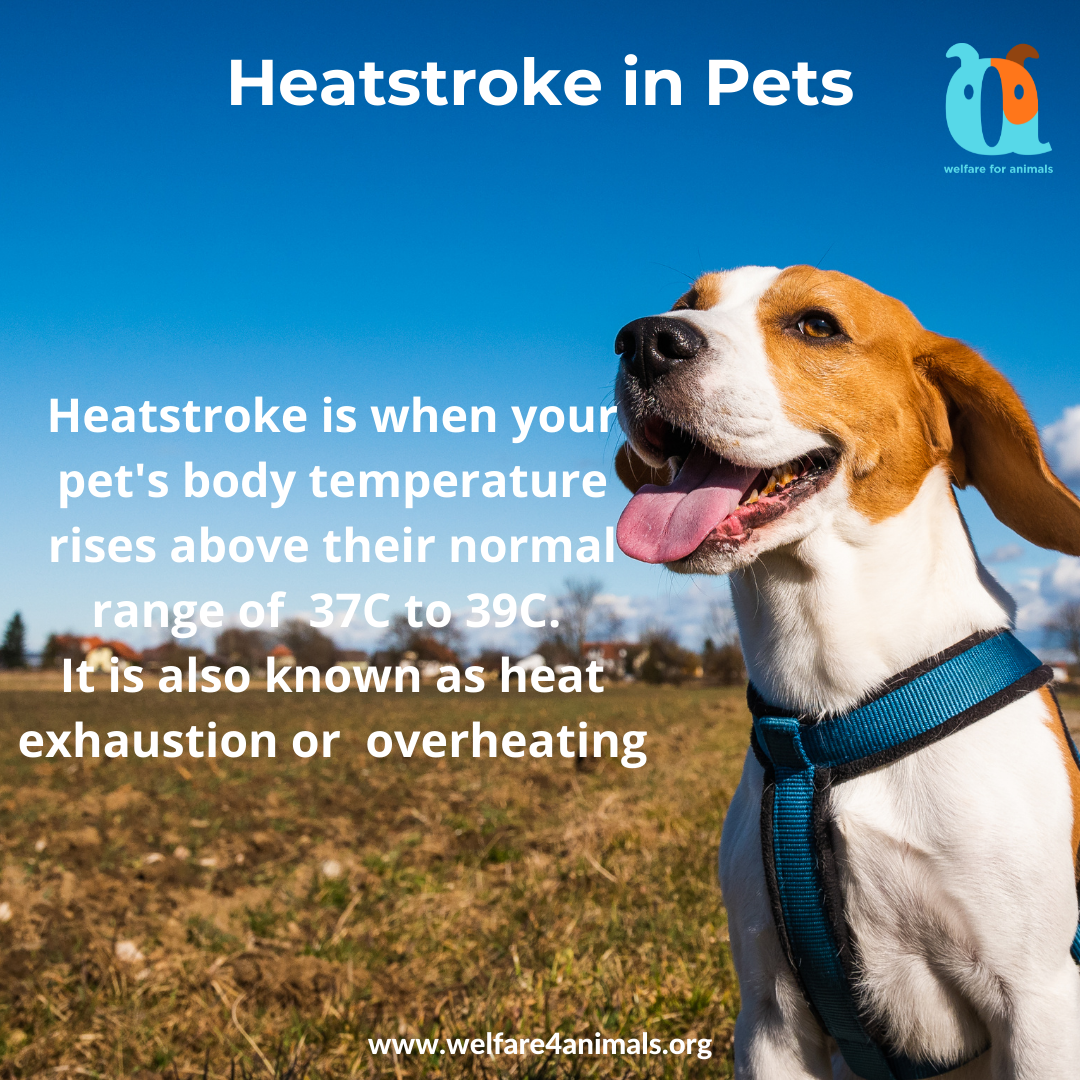Heatstroke in Pets
Did you know that even though heatstroke is very common in pets during the summer – it can happen year-round? All you need is a heatwave or a little bit of hot weather and a pet can develop heatstroke. Heatstroke progresses quickly, and if not acted on immediately, it can create swelling of the brain, leading to seizures and death. Cats and dogs do not have the same amount of sweat glands as we do, so they overheat faster. This is why on very hot days it is very important to keep your pets cool.
When can cats or dogs develop heatstroke?
When pets are left outside on hot days
On days of high humidity, even if the temperature is not that high
When your pet has no access to water on hot or warm days
Your pet has no access to AC, fans, or ventilation on hot days
If your pet is left inside a car- even on warm days
Which dogs and cats are most at risk?
All animals are at risk for developing heatstroke, but some are at more risk than others
Due to their narrowed stenotic nlares from intensive inbreeding, flat-faced cat and dog breeds (brachycephalic breeds such as English bulldogs, Pugs, French bulldogs, Pekingese, Boston terrier, Himalayan cats and Persian cats) are at greater risk of overheating.
For more information on brachycephalic breeds go here
Senior pets
Young puppies or kittens
Pets that have been taken out for excessive exercise during the hottest time of the day
Overweight pets
Pets with long/thick coats
Pets with lung and heart disease
Dehydrated pets
If your cat or dog fits in any of these categories, keep them inside your air-conditioned home on hot days, go for long walks in the morning or evening, and very small pee breaks in the middle of the day. Use enrichment to help keep them mentally and physically stimulated.
What are the signs of heatstroke in pets?
Heatstroke can be deadly or cause serious physical damage to your pet if not addressed immediately. On hot days, constantly monitor your cat or dog for the signs of overheating listed below.
Ways to Prevent Heatstroke
Real life examples of WHAT NOT TO DO
On hot days don’t leave your dog in your car. If you need to go run errands or do something in your car, your dog should stay at home. Cars trap in heat which quickly progresses to dangerous levels
If you need to go to the store and want to walk your dog with you- save those walks. Too many dogs are left tied outside stores on hot days which leaves them at risk for dog theft, heatstroke and also causes them significant stress
Don’t take your dog for jogs, runs, play fetch during the heat of the day
Don’t leave your cat’s or dog’s water bowl near windows or where it can be heated from the sun
What TO DO
Take your dog out for long walks, jogs or exercise in the mornings and evenings
If you need to run errands whether by car or foot, don’t take your dog- give them some fun enrichment to do while you’re gone
If you let your cat outside, keep an eye on them and make sure they have a solid recall- hot days might be the time to teach them how to walk on a harness and leash- if you want to learn how to do this contact us here
Provide your dog with a kiddie pool, sprinklers or go to a nearby water source (river, lake or ocean)
For indoor cats, schedule brush time in the morning and play time in the evening- cats love routine and this would help them be stimulated, decrease excess fur and provide bonding time
Here are 15 hot weather tips to keep your pets hydrated, cool and to prevent heat stroke
Making sure there are lots of shady areas by closing the blinds, placing pet beds and cat scratcher boxes in shady spots
Placr fans around the home- but not directly on pets
Turn on air conditioning in your home, especially when you leave.
Keeping water bowls away from hot areas and making sure they stay cool by using cold water – or keep water cool in the fridge and give that to your pet’s for a crisp drink
Using large, shallow stainless-steel water, glass, or ceramic bowls instead of plastic ones which absorb the heat
Placing a few ice cubes in your pet’s water (only in 1 water bowl to make sure we like it and have choice)
Constantly making sure your pet’s water is full and having multiple water stations around the home
Create ice treats for your cat or dog by combining catnip, treats, tuna brine and water and freezing them
Make ice treats for your dog by mixing vegetables, their favourite treats, fruits and a bit of water together and freeze. But be mindful of dangerous foods for your dog!- find more dangerous foods for dogs here and dangerous foods for cats here
Get some cooling mats
Brush your cat or dog (but don’t shave them) as excess fur can trap heat
Bring a water bottle for walks
Only walk your dog in the mornings and evenings, with short pee breaks during the day
Provide enrichment to keep your pets mentally and physically stimulated when indoors
Check how hot the pavement is- using the 5 second rule. Check out our Instagram for a reel on the 5-second rule here
Make frozen treats for your cat! If you do, post it online and tag us o at @WelfareForAnimals on Facebook or @welfareforanimals on Instagram
Make frozen treats for your cat! If you do, post it online and tag us o at @WelfareForAnimals on Facebook or @welfareforanimals on Instagram
Why shouldn’t you shave your cat or dog in summer?
You might think it looks cool and is good for us, but it’s not. Shaving a dog or cat decreases natural regulation as the undercoat prevents cold air from getting to the skin underneath. It also leads to greater risks of overheating, sunburns, skin cancer, infection, and parasites as there are no guard hair to protect the dog.
What to do if your dog or cat are overheating/ suffering from heatstroke:
Guide them to seek shade
-Wet their paws and legs with cool (not ice cold) water
Gently use your hand to wipe some lukewarm water on your pet’s fur
Provide water but don’t force them to drink- let them decide
Call your vet immediately
If your cat or dog is suffering from the heat, DO NOT place a wet blanket on them or place/submerge them in a cold-water bath as that will send them into shock. Wet towels can also act as a barrier for regulation, which will warm us up. Also- never use ICY COLD water as this will reduces blood flow to the skin, decreasing their ability to cool down.
If at any time your pet shows any signs of heatstroke or overheating contact your vet or find the nearest open vet clinic as soon as possible.
Sources: https://www.aaha.org/your-pet/pet-owner-education/ask-aaha/how-can-i-prevent-heatstroke-in-my-pet/
https://www.rspcapetinsurance.org.au/pet-care/health/heatstroke-hyperthermia
https://www.cats.org.uk/swale/feature-pages/how-to-keep-your-cat-cool




